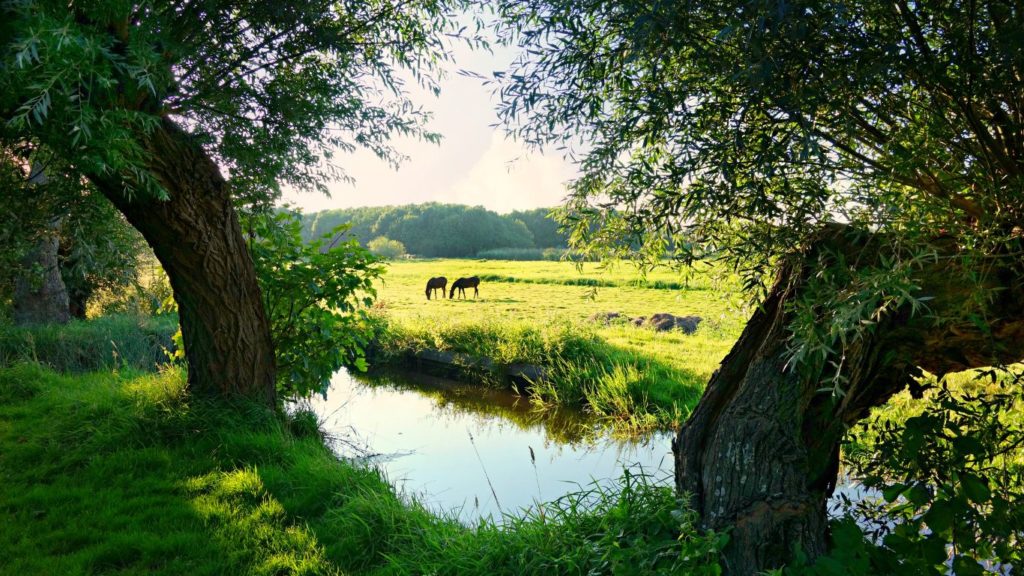Discover the enchanting beauty of the Upper Loire Valley and its captivating wildlife on a barge cruise through this picturesque region. As you meander along the rivers and canals, you can relish immersing yourself in the diverse ecosystems that support an array of fascinating species. From the playful Eurasian otter to the striking fire salamander, the upper Loire Valley offers a rich tapestry of flora and fauna to explore.
Depending on the season, you’ll witness different species in their natural habitats. The spring and summer months offer enriching wildlife experiences. In this guide, we’ll provide an overview of the best times to spot wildlife, notable species to look out for, tips for spotting and appreciating local fauna, and the role of barge cruises in conservation efforts.
Best Time to Spot Wildlife During an Upper Loire Barge Cruise
Consider the weather when planning your barge cruise, as extreme conditions can affect the cruising experience and wildlife sightings. Spring (April to June) can be exceptionally enchanting, as many migratory birds return to the region, and blossoming plants create a serene ambiance for various species. However, the warm summer months (July and August) can be equally rewarding, with opportunities to observe reptiles and insects amidst the lush greenery.
Notable Wildlife Species to Look Out For While on an Upper Loire Barge Cruise
As you journey through the Loire Valley, you will feel the excitement of discovering an impressive array of mammals, birds, reptiles, amphibians, insects, and other invertebrates. Some notable species you may encounter include:
Mammals:
- Eurasian otters: Watch in awe as these playful creatures, with their streamlined bodies, frolic in the water or interact with their family members.
- Roe deer: Witness the grace of these elegant animals as they meander through the forests and meadows, their gentle eyes meeting yours fleetingly.
- European beavers: Marvel at the industrious nature of these rodents as they work together to construct dams and lodges along riverbanks.
Birds:
- Gray herons: Observe the elegance of these skilled fishers as they wade through shallow water or soar overhead, their long necks and legs adding to their allure.
- Kingfishers: Admire the brilliant colors of these tiny birds as they perch on branches overlooking the water, ready to dive in and catch their prey in a flash.
- White storks: Feel the magic as these large, striking birds build their nests on rooftops and chimneys, symbolizing love and loyalty.
Reptiles and Amphibians:
- European pond turtles: Enjoy a quiet moment as you watch these tiny freshwater turtles bask in the sun on logs or rocks near water bodies.
- Fire salamanders: Delight in discovering these strikingly patterned amphibians, hidden in damp, shady spots after rain.
- Grass snakes: Experience the thrill of spotting these non-venomous snakes swimming gracefully in the water or hunting amphibians among the foliage.
Insects and Other Invertebrates:
- Dragonflies: Enjoy the time you have to be captivated by the iridescent wings and agile flight of these insects as they dart over water bodies like dancers in a mesmerizing performance.
- Butterflies: Embrace the romance of strolling hand-in-hand through gardens filled with a plethora of butterfly species, their vibrant colors adding to the dreamy atmosphere.
- Spiders: From the large and furry to the small and delicate, the region’s spiders are an essential part of the ecosystem and are fascinating to observe.
Tips for Spotting and Appreciating Local Fauna
To make the most of your wildlife encounters, consider the following tips:
- Research local species before your trip and familiarize yourselves with their appearance, behavior, and habitats.
- Pack appropriate gear, such as binoculars, field guides, and a camera with a zoom lens, to enhance your wildlife-spotting experience and capture precious memories.
- Look for signs and tracks, such as footprints, droppings, or feeding marks, that may indicate the presence of animals, turning your adventure into a thrilling treasure hunt.
- Observe from a distance to avoid disturbing the wildlife and to increase your chances of witnessing natural behavior, allowing you to appreciate the beauty of nature undisturbed.
- Practice patience and timing, as many species are most active during the early morning or late afternoon, creating magical moments as the sun rises or sets.
- Ethical considerations play a crucial role in wildlife encounters. Respect animals’ personal space and avoid approaching or feeding them too closely. Promote responsible tourism by supporting local conservation initiatives and choosing eco-friendly cruise options.
The Role of Barge Cruises in Conservation Efforts
Luxury barge cruises can contribute to conservation efforts considerably. By opting for eco-friendly barge cruises that naturally minimize environmental impact, you can protect the region’s biodiversity while supporting the local conservation of the Loire Valley’s natural heritage.
The Loire Valley’s captivating wildlife is a key element of the region’s natural heritage and an essential aspect of the barge cruising experience. By familiarizing yourself with local species and following ethical guidelines for wildlife encounters, you can maximize your chances of witnessing these creatures in their natural habitats. By opting for barge cruises like the Barge Meanderer, you can play your part in protecting and preserving this diverse ecosystem for future generations to enjoy. So embark on your adventure through the Loire Valley, and revel in the unforgettable memories and breathtaking sights that await you. Get in touch with us today to directly book an immersive and fulfilling adventure on the Barge Meanderer to explore the natural beauty one can only experience in the Loire Valley.

